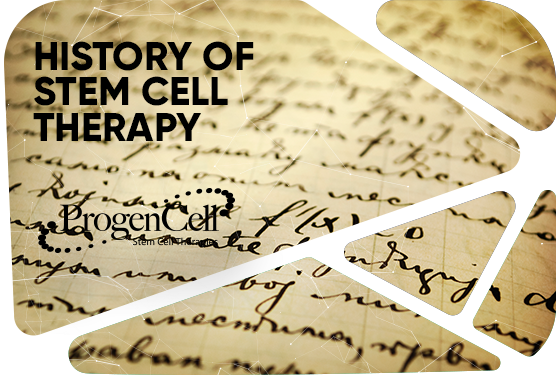
Stem Cell Therapy is a treatment or therapeutic approach where stem cells are used with the goal of regenerating other damaged cells in human tissue. The scientific research and medical use of stem cells has a long story of more than a century, since the term stem cells was coined by german scientists in the late 19th century. To better understand the story and the years of research behind stem cell therapy we have compiled a historic timeline with some of the most important milestones in the field of stem cell therapy and regenerative medicine:

1888 The term stem cell was coined by German scientists Theodor Boveri and Valentin Haecker.
1902 Russian Histologist Alexander M. Maximow identified Haematopoiesis, the formation of blood cellular components. All cellular blood components are derived from haematopoietic stem cells.
1958 The first therapy using stem cells was a bone marrow transplant performed by French oncologist Georges Mathé on five workers at the Vinča Nuclear Institute in Yugoslavia who had been affected by a criticality accident. The workers all survived.
1963 Ernest McCulloch and James Till at the University of Toronto, demonstrated the existence of stem cells.
1969 Edward Donnall Thomas performed the first bone marrow transplant in America.
1981 Embryonic stem (ES) cells were first isolated and successfully cultured using mouse blastocysts by British biologists Martin Evans and Matthew Kaufman. This allowed the formation of murine genetic models, a system in which the genes of mice are deleted or altered in order to study their function in pathology.
1998 Embryonic stem cells were first isolated by American biologist James Thomson, which made it possible to have new transplantation methods or various cell types for testing new treatments.
2005 Scientists at Kingston University in England were purported to have found another category of stem cells. These were named cord blood embryonic-like stem cells, which originated in umbilical cord blood.
2005 Korean Researcher Hwang Woo-Suk (2004–2005) claimed to have created several human embryonic stem cell lines from unfertilised human oocytes.
2006 Shinya Yamanaka’s team in Kyoto, Japan converted fibroblasts into pluripotent stem cells by modifying the expression of only four genes. The feat represents the origin of induced pluripotent stem cells, known as iPS cells.
2006 Scientists at Newcastle University in England create the first ever artificial liver cells using umbilical cord blood stem cells.
2007 Researchers led by Dr. Anthony Atala claimed that a new type of stem cell had been isolated in amniotic fluid.
2007 Mario Capecchi, Martin Evans, and Oliver Smithies won the 2007 Nobel Prize for Physiology or Medicine for their work on embryonic stem cells from mice using gene targeting strategies producing genetically engineered mice (known as knockout mice) for gene research.
2008 The first published study of successful cartilage regeneration in the human knee using autologous adult mesenchymal stem cells was published by clinicians from Regenerative Sciences.
2008 Embryonic stem cells isolated from a single human hair were reported.
2009 Australian Scientists found a way to improve chemotherapy of mouse muscle stem cells.
2009 ProgenCell Stem Cell Therapies Stem Cell Treatment Center was founded in Tijuana, Mexico.
2020 ProgenCell opened its new Center in NewCity Medical Plaza.
Sources:
Müller, Albrecht M.; Huppertz, Sascha; Henschler, Reinhard (July 2016). “Hematopoietic Stem Cells in Regenerative Medicine: Astray or on the Path?”. Transfusion Medicine and Hemotherapy. 43 (4): 247–254. doi:10.1159/000447748. ISSN 1660-3796. PMC 5040947. PMID 27721700
“On the Origin of the Term “Stem Cell””. Cell Stem Cell.
MacPherson C. “The Accidental Discovery of Stem Cells”. USask News. University of Saskatchewan.
Vinca reactor accident, 1958 Archived 27 January 2011 at the Wayback Machine, compiled by Wm. Robert Johnston
Ferreira L (2014-01-03). “Stem Cells: A Brief History and Outlook”. Stem Cells: A Brief History and Outlook – Science in the News.









